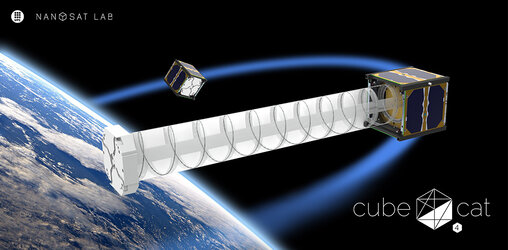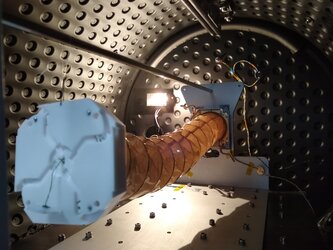Accept all cookies Accept only essential cookies See our Cookie Notice

About ESA
The European Space Agency (ESA) is Europe’s gateway to space. Its mission is to shape the development of Europe’s space capability and ensure that investment in space continues to deliver benefits to the citizens of Europe and the world.
Highlights
ESA - United space in Europe
This is ESA ESA facts Member States & Cooperating States Funding Director General Top management For Member State Delegations European vision European Space Policy ESA & EU Space Councils Responsibility & Sustainability Annual Report Calendar of meetings Corporate newsEstablishments & sites
ESA Headquarters ESA ESTEC ESA ESOC ESA ESRIN ESA EAC ESA ESAC Europe's Spaceport ESA ESEC ESA ECSAT Brussels Office Washington OfficeWorking with ESA
Business with ESA ESA Commercialisation Gateway Law at ESA Careers Cyber resilience at ESA IT at ESA Newsroom Partnerships Merchandising Licence Education Open Space Innovation Platform Integrity and Reporting Administrative Tribunal Health and SafetyMore about ESA
History ESA Historical Archives Exhibitions Publications Art & Culture ESA Merchandise Kids Diversity ESA Brand Centre ESA ChampionsLatest
Space in Member States
Find out more about space activities in our 23 Member States, and understand how ESA works together with their national agencies, institutions and organisations.
Science & Exploration
Exploring our Solar System and unlocking the secrets of the Universe
Go to topicAstronauts
Missions
Juice Euclid Webb Solar Orbiter BepiColombo Gaia ExoMars Cheops Exoplanet missions More missionsActivities
International Space Station Orion service module Gateway Concordia Caves & Pangaea BenefitsLatest
Space Safety
Protecting life and infrastructure on Earth and in orbit
Go to topicAsteroids
Asteroids and Planetary Defence Asteroid danger explained Flyeye telescope: asteroid detection Hera mission: asteroid deflection Near-Earth Object Coordination CentreSpace junk
About space debris Space debris by the numbers Space Environment Report In space refuelling, refurbishing and removingSafety from space
Clean Space ecodesign Zero Debris Technologies Space for Earth Supporting Sustainable DevelopmentLatest
Applications
Using space to benefit citizens and meet future challenges on Earth
Go to topicObserving the Earth
Observing the Earth Future EO Copernicus Meteorology Space for our climate Satellite missionsCommercialisation
ESA Commercialisation Gateway Open Space Innovation Platform Business Incubation ESA Space SolutionsLatest
Enabling & Support
Making space accessible and developing the technologies for the future
Go to topicBuilding missions
Space Engineering and Technology Test centre Laboratories Concurrent Design Facility Preparing for the future Shaping the Future Discovery and Preparation Advanced Concepts TeamSpace transportation
Space Transportation Ariane Vega Space Rider Future space transportation Boost! Europe's Spaceport Launches from Europe's Spaceport from 2012Latest

3Cat-4 antenna
Thank you for liking
You have already liked this page, you can only like it once!
3Cat-4 with deployed NADS antenna during testing at ESA Education’s CubeSat Support Facility (CSF) in ESEC-Galaxia, Belgium
3Cat-4 (pronounced “cube cat four”) is a 1-kg Earth Observation CubeSat developed by the Universitat Politècnica de Catalunya in Spain and selected by ESA Education’s ‘Fly Your Satellite!’ programme to fly on Ariane 6’s first flight.
The 3Cat-4 design was carefully reviewed by experts as part of the programme, who provided design and testing support to the mission team, including important environmental testing at ESA Education’s CubeSat Support Facility (CSF) in ESEC-Galaxia, Belgium.
Otherwise, the nanosatellite has been nearly entirely developed by graduate and undergraduate students who have designed, built and validated the vast majority of its components, conducted complex analyses and planned and performed test campaigns with specialised equipment. For several students, the mission is central to their course curriculum or degree thesis.
“The primary goal of the mission is educational; training a group of students in the techniques and methodologies involved in flying a space mission, while conducting challenging teamwork with a real sense of responsibility,” explains Alexander Kinnaird, ESA Engineering Coordinator for the Fly Your Satellite! project.
“But 3Cat-4 also has several scientific and technological objectives that we hope will demonstrate the big potential of CubeSats when it comes to innovative space technology, usually reserved for larger satellites.”
The mission’s primary scientific experiment will be to measure several important climate variables using a technique called ‘Global Navigation Satellite System Reflectometry’ (GNSS-R). GNSS-R involves measuring the reflected signals from orbiting Global Navigation Satellite Systems, such as Galileo and GPS, that bounce off Earth’s surface.
This ‘passive remote sensing’ measures the difference between the signals directly received from navigation satellites in orbit and the signals from those same satellites that have been reflected off Earth. Using this data, ³Cat4 will be able to measure the properties of the reflective surface and detect several types of weather phenomena, determine land topography and vegetation cover and extract information on ocean data such as ice coverage and thickness.
Along with its remote sensing capabilities, 3Cat-4 will carry an ‘L-band radiometer’ – an instrument that detects radiation emitted in the 1-2 GHz frequency range which makes it possible to analyse soil moisture and ocean salinity. The CubeSat will also have an Automatic Identification System (AIS) allowing it to track ships along their intercontinental routes. It also includes a ‘Radio Frequency Interference’ detection and mitigation system, which is especially important for microwave radiometry observations used for soil moisture measurements.
Crucially, 3Cat-4 will demonstrate the feasibility and performance of its 0.5-meter spring-like antenna, the Nadir Antenna and Deployment System (NADS). Stowed away for launch, the antenna will take up very little space, allowing its future inclusion in even smaller CubeSats. Once in orbit, it will spring open to perform impressive observations usually the domain of larger missions, providing a powerful eye on Earth despite its portable travel size.
-
CREDIT
Universitat Politècnica de Catalunya -
LICENCE
ESA Standard Licence

3Cat-4

3Cat-4 exploded view

3Cat4 student working on CubeSat

The 3Cat-4 CubeSat in the its thermal vacuum test chamber















 Germany
Germany
 Austria
Austria
 Belgium
Belgium
 Denmark
Denmark
 Spain
Spain
 Estonia
Estonia
 Finland
Finland
 France
France
 Greece
Greece
 Hungary
Hungary
 Ireland
Ireland
 Italy
Italy
 Luxembourg
Luxembourg
 Norway
Norway
 The Netherlands
The Netherlands
 Poland
Poland
 Portugal
Portugal
 Czechia
Czechia
 Romania
Romania
 United Kingdom
United Kingdom
 Slovenia
Slovenia
 Sweden
Sweden
 Switzerland
Switzerland
























